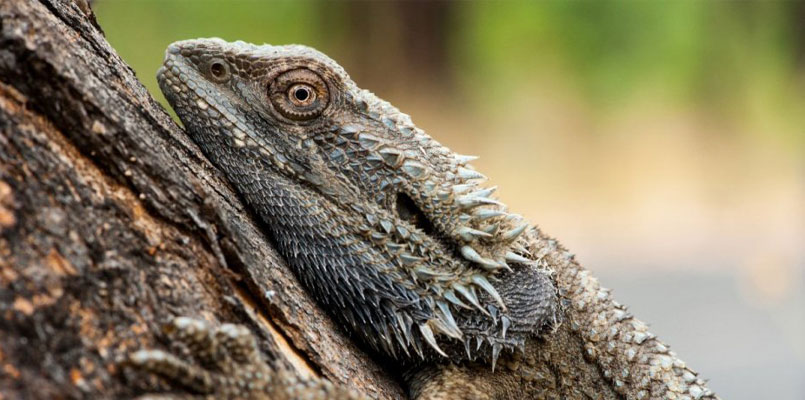
Pogona barbata
About
The Pogona barbata is commonly known as the Eastern Bearded Dragon, Common Bearded Dragon, or simply Bearded Lizard. Pogona barbata is one of eight species contained in the Pogona genus.
Unlike the vitticeps, barbata do not have different morphs. In fact, the Pogona barbata is rarely kept as a pet, and is not commonly found outside of Australia. Like the Pogona henrylawsoni they are considered exotic pets.
Description
Pogona barbata is similar in description to the Pogona vitticeps, with an equivalent maximum length of 60 cm. The appearance of the Pogona barbata is a grey-black or red-brown color. The ‘beard’ of the dragon is spiny, with dark grey scales which can be raised to form and accentuate its “beard”. This species has several groups of long scales/spikes that can be found at the back of the head, the external ear openings, the corners of the mouth, and running along both sides of the abdomen.
Geography
Pogona barbata is found along the entire eastern cost of Australia. In some cases, Pogona barbata has been found through central Australia and as far as the west coast of Australia. The Pogona barbata will be founded in wooded areas. Pogona barbata is considered semi arboreal and will perch on prominently exposed areas such as tree branches and logs. They will retreat to lower and cooler places when the temperatures rise.
Behavior
Pogona barbata are more aggressive than the Pogona vitticeps. The males are territorial and will only tolerate female and juvenile dragons into their territory. The dominant males will typically be the largest dragons, claiming the highest perches. When threatened, the Pogona barbata will inflate its throat displaying its large dark beard. If the dragon is further provoked, it will open its mouth. Given its more aggressive disposition, the Pogona barbata will display its beard more than the Pogona vitticeps.
Diet
The diet of the Pogona barbata consists of a variety of small animals, that include mice, smaller reptiles, and insects. In captivity, they will also eat leaf vegetables, fruits, and berries.
References
Cogger HG. 1992. Reptiles and Amphibians of Australia, Reed Books, Australia
